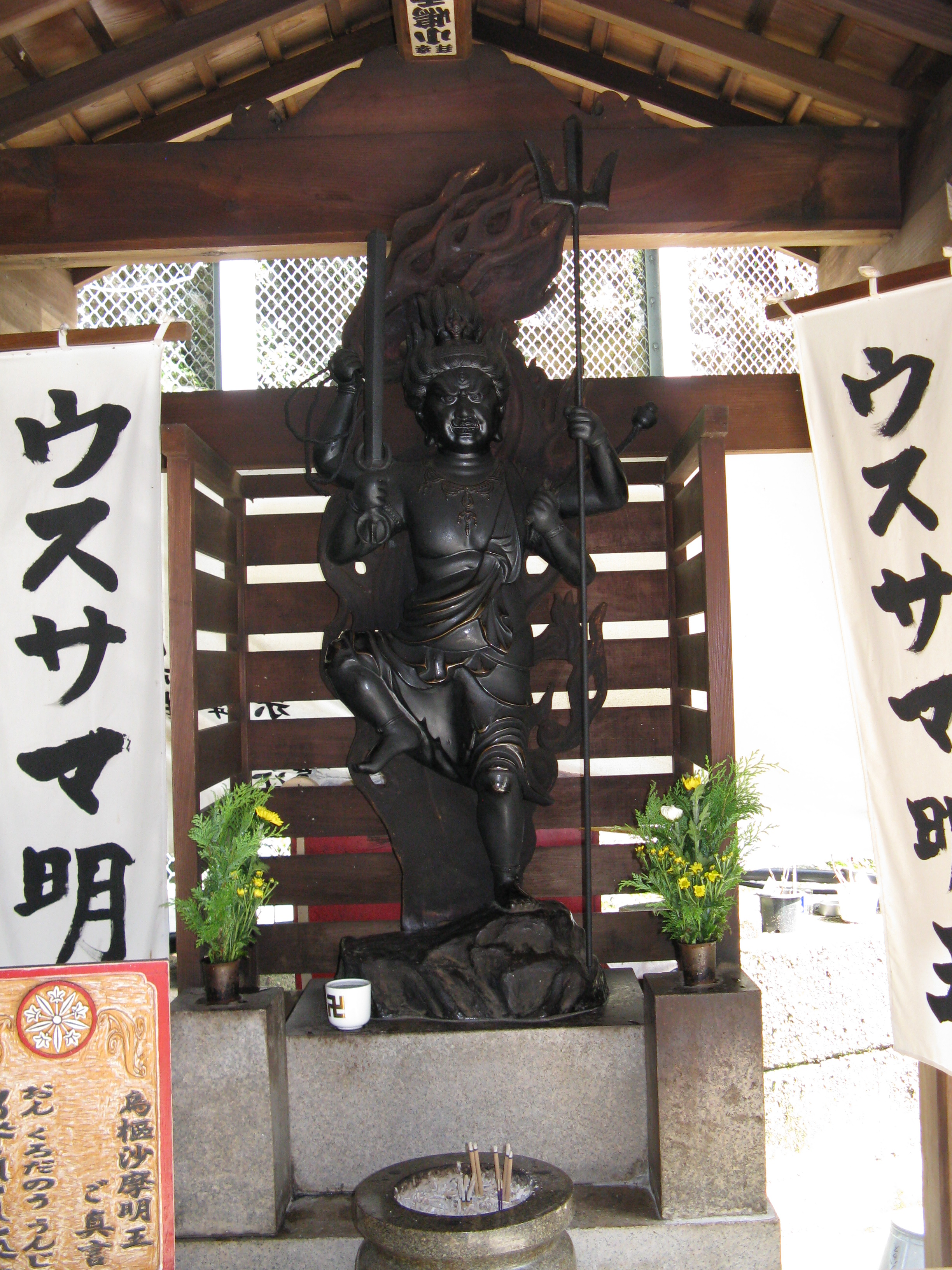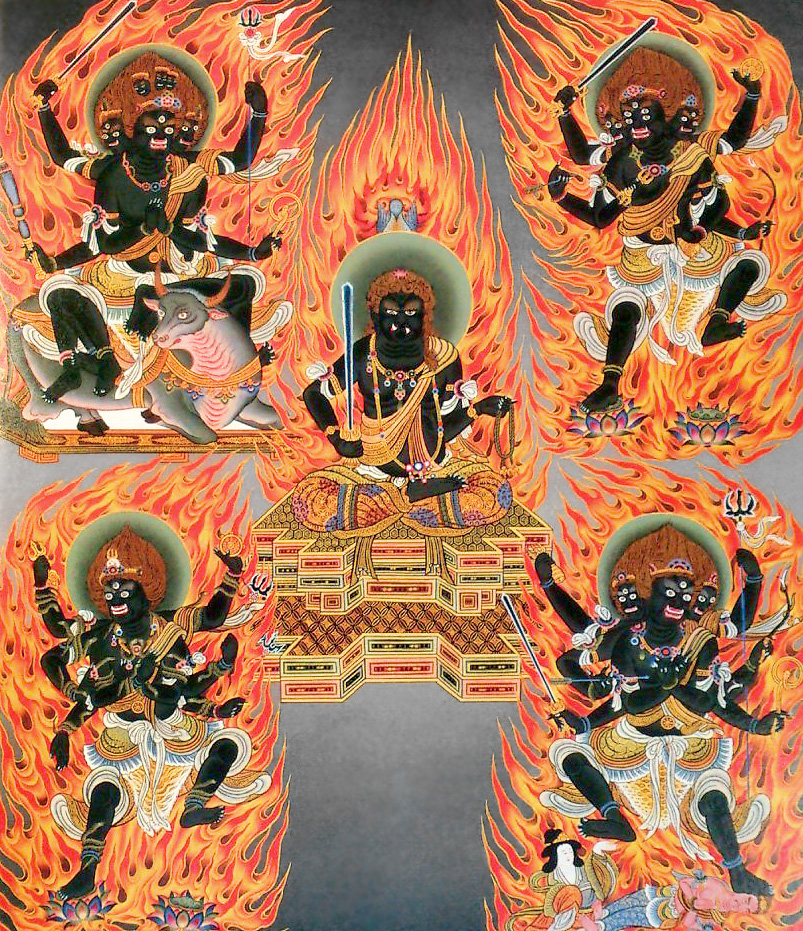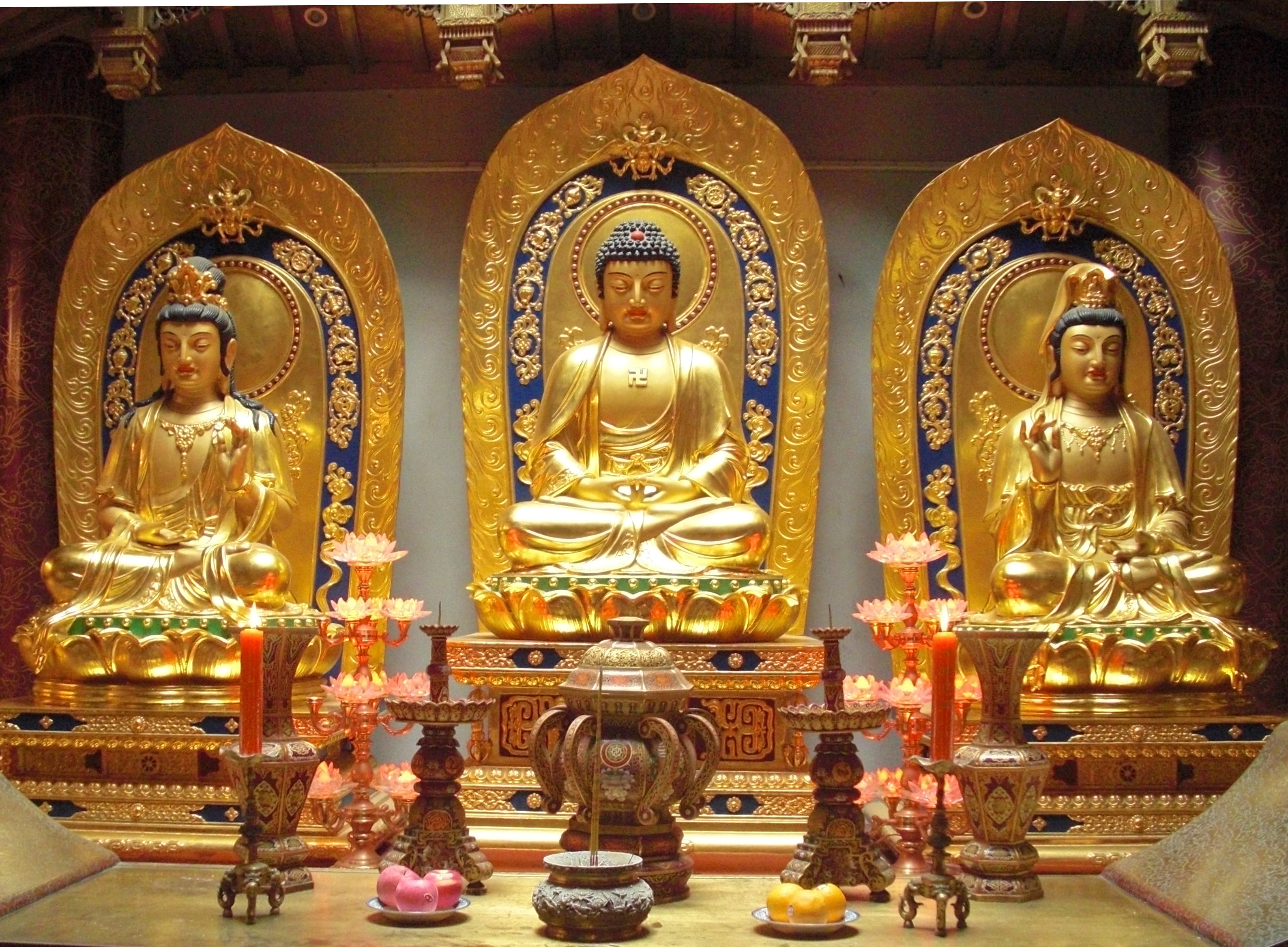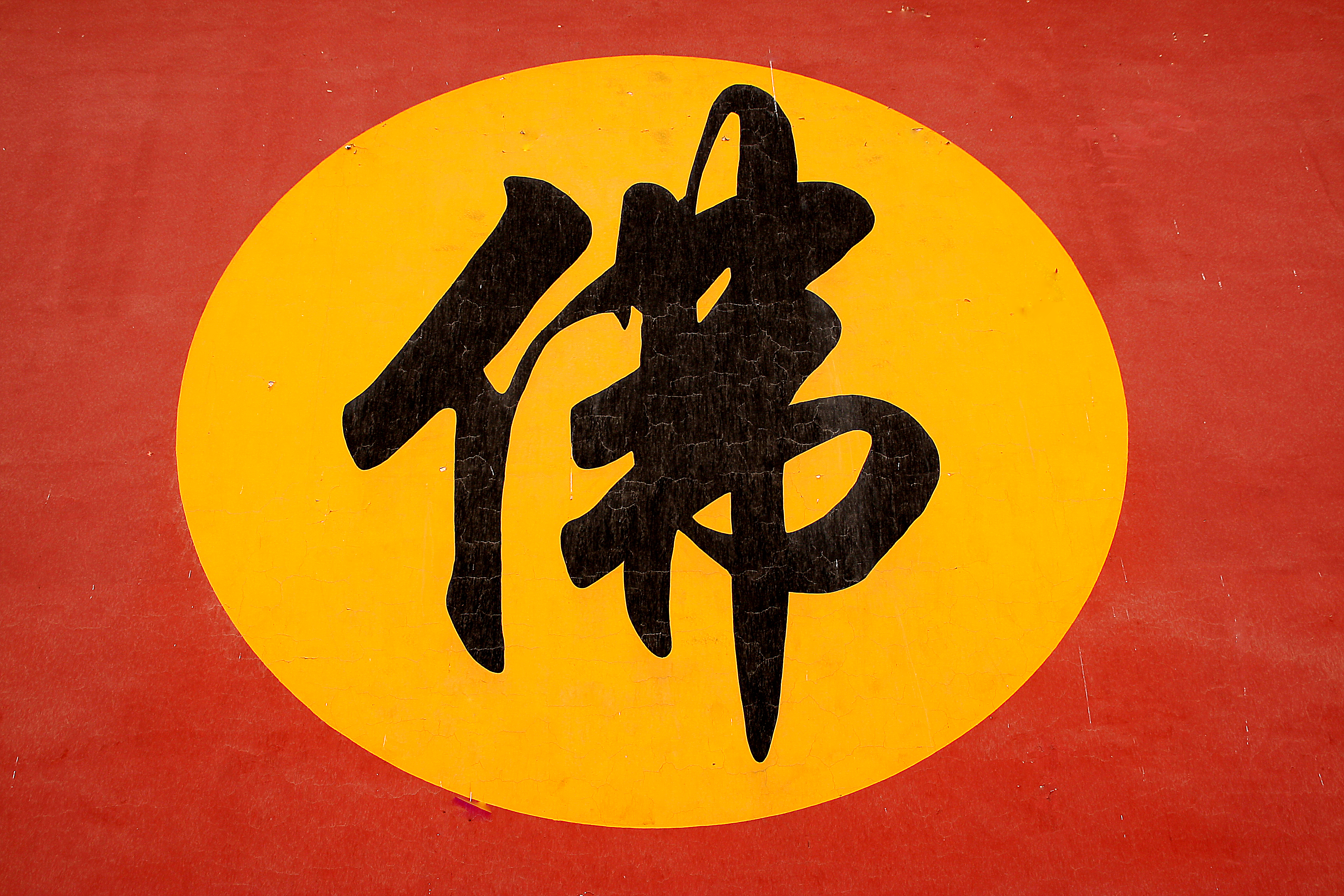|
Ucchusma
Ucchuṣma (; Rōmaji: ''Eshaku Kongō'') is a Wisdom King, Vidyārāja in Mahayana and Vajrayana Buddhism. Ucchuṣma's full name in Sanskrit sources is ''Vajra Krodha Mahābala Ucchuṣma'' (lit. "Great Strength Furious Diamond Ucchuṣma"). In Chinese, this is translated as 大力威怒金刚烏芻使摩 (pinyin: ''Dàlì Wēinù Jīngāng Wūchúshǐmó''), from the Chinese version of the ''Sūtra of Mahābala'' and the Tibetan version of the ''Ārya-Mahābalanāma Mahāyāna Sūtra''. Name Ucchuṣma is known by various epithets and names in Chinese and Japanese Buddhism, which developed due to controversy surrounding the negative associations with impurities surrounding some of his names. Epithets The Vajra-being of Impure Traces * Chinese characters, Traditional Chinese characters: 穢跡金剛 *Simplified Chinese characters: 秽迹金刚 *Pinyin: ''Huìjì Jīngāng'' *Romanization of Japanese, Rōmaji: ''Eshakukongō'' The Vajra-being who Removes Impuriti ... [...More Info...] [...Related Items...] OR: [Wikipedia] [Google] [Baidu] [Amazon] |
Wisdom King
A wisdom king (Sanskrit: विद्याराज; International Alphabet of Sanskrit Transliteration, IAST: ''vidyārāja'', ) is a type of Wrathful deities, wrathful deity in East Asian Buddhism. Whereas the Sanskrit name is translated literally as "wisdom / knowledge king(s)," the term ''Vidya (philosophy), vidyā'' in Vajrayana Buddhism is also specifically used to denote mantras; the term may thus also be rendered "mantra king(s)." ''Vidyā'' is translated in Chinese with the character wikt:明, 明 (lit. "bright, radiant", figuratively "knowledge(able), wisdom, wise"), leading to a wide array of alternative translations such as "bright king(s)" or "radiant king(s)". A similar category of fierce deities known as herukas are found in Tibetan Buddhism. The female counterparts of wisdom kings are known as wisdom queens (Sanskrit (IAST): ''vidyārājñī'', Chinese: 明妃, ''Míngfēi'', Japanese: ''Myōhi''). Overview Development ''Vidyārājas'', as their name suggests, a ... [...More Info...] [...Related Items...] OR: [Wikipedia] [Google] [Baidu] [Amazon] |
Toilet God
A toilet god is a deity associated with latrines and toilets. Belief in toilet gods – a type of household deity – has been known from both modern and ancient cultures, ranging from Japan to ancient Rome. Such deities have been associated with health, well-being and fertility (because of the association between human waste and agriculture) and have been propitiated in a wide variety of ways, including making offerings, invoking and appeasing them through prayers, meditating and carrying out ritual actions such as clearing one's throat before entering or even biting the latrine to transfer spiritual forces back to the god. Modern cultures In Japan, belief in the toilet god or ''kawaya kami'', most often depicted in the form of ''Ususama-myō-ō'' (烏枢沙摩明王), served a dual purpose. Most bodily wastes were collected and used as fertilizers, ensuring a higher overall level of sanitation than in other countries where wastes were stored in cesspits or otherwise disposed of. ... [...More Info...] [...Related Items...] OR: [Wikipedia] [Google] [Baidu] [Amazon] |
Śūraṅgama Sūtra
The ''Śūraṅgama Sūtra'' (, ''Sūtra of the Heroic'' ''March'') (Taisho no. 945) is a Mahayana Buddhist sutra that has been especially influential on Korean Buddhism (where it remains a major subject of study in Sŏn monasteries) and Chinese Buddhism (where it remains a regular part of the daily liturgy in all Chinese Buddhist monasteries and a major subject of doctrinal study).Benn, James A. ''Another Look at the Pseudo-Śūraṃgama sūtra.'' Harvard Journal of Asiatic Studies, Vol. 68, No. 1 (Jun., 2008), pp. 57-89, Harvard-Yenching Institute, It is important for Zen/Chan Buddhism and Chinese Pure land Buddhism (where it is considered a central scripture).Venerable Master Chin Kung; Li Ping Nan. ''The Awakening of Compassion and Wisdom,'' p. 199. The doctrinal outlook of the ''Śūraṅgama Sūtra'' is that of Buddha-nature, Yogacara thought, and esoteric Buddhism. The ''Śūraṅgama Sūtra'' was widely accepted as a sutra in East Asian Buddhism, where it has traditi ... [...More Info...] [...Related Items...] OR: [Wikipedia] [Google] [Baidu] [Amazon] |
Taoism
Taoism or Daoism (, ) is a diverse philosophical and religious tradition indigenous to China, emphasizing harmony with the Tao ( zh, p=dào, w=tao4). With a range of meaning in Chinese philosophy, translations of Tao include 'way', 'road', 'path', or 'technique', generally understood in the Taoist sense as an enigmatic process of transformation Ultimate reality, ultimately underlying reality. Taoist thought has informed the development of various practices within the Taoist tradition and beyond, including forms of Taoist meditation, meditation, Chinese astrology, astrology, qigong, feng shui, and Neidan, internal alchemy. A common goal of Taoist practice is self-cultivation, a deeper appreciation of the Tao, and more harmonious existence. Taoist ethics vary, but generally emphasize such virtues as ''wu wei, effortless action'', ziran, ''naturalness'', ''pu (Taoism), simplicity'', and the Three Treasures (Taoism), three treasures of compassion, frugality, and humility. The co ... [...More Info...] [...Related Items...] OR: [Wikipedia] [Google] [Baidu] [Amazon] |
Pure Land Buddhism
Pure Land Buddhism or the Pure Land School ( zh, c=淨土宗, p=Jìngtǔzōng) is a broad branch of Mahayana, Mahayana Buddhism focused on achieving rebirth in a Pure land, Pure Land. It is one of the most widely practiced traditions of East Asian Buddhism, Buddhism in East Asia. It is also known as the "Lotus School" (Chinese language, Chinese: 蓮宗; pinyin: ''Liánzōng'') in China or the "Nianfo, Nembutsu school" in Japan. East Asian Pure Land mainly relies on three main Mahayana sutras, Mahayana scriptures: the ''Longer Sukhāvatīvyūha Sūtra, Sutra of Amitayus'', the ''Amitāyus Contemplation Sūtra, Contemplation Sutra'' and the ''Shorter Sukhāvatīvyūha Sūtra, Amitabha Sutra''. The Pure Land tradition is primarily focused on achieving rebirth in a Buddhahood, Buddha's "pure land", a superior place to spiritually train for full Buddhahood, where one can meet a Buddha face to face and study under them without any of the distractions or fears of our world.Williams, Pau ... [...More Info...] [...Related Items...] OR: [Wikipedia] [Google] [Baidu] [Amazon] |
Huayan
The Huayan school of Buddhism (, Wade–Giles: ''Hua-Yen,'' "Flower Garland," from the Sanskrit "''Avataṃsaka''") is a Mahayana Buddhist tradition that developed in China during the Tang dynasty (618-907).Yü, Chün-fang (2020). ''Chinese Buddhism: A Thematic History'', p. 160. University of Hawaii Press. The Huayan worldview is based primarily on the '' Buddhāvataṃsaka Sūtra'' ( zh, t=華嚴經, p=Huáyán jīng, ''Flower Garland Sutra'') as well as on the works of Huayan patriarchs, like Zhiyan (602–668), Fazang (643–712), Chengguan (738–839), Zongmi (780–841) and Li Tongxuan (635–730). Another common name for this tradition is the Xianshou school (''Xianshou'' being another name for patriarch Fazang).Hammerstrom, Erik J. (2020). ''The Huayan University network: the teaching and practice of Avataṃsaka Buddhism in twentieth-century China'', chapter 1. Columbia University Press. The Huayan School is known as Hwaeom in Korea, Kegon in Japan and Hoa Nghi ... [...More Info...] [...Related Items...] OR: [Wikipedia] [Google] [Baidu] [Amazon] |
Tiantai
Tiantai or T'ien-t'ai () is an East Asian Buddhist school of Mahāyāna Buddhism that developed in 6th-century China. Drawing from earlier Mahāyāna sources such as Madhyamaka, founded by Nāgārjuna, who is traditionally regarded as the first patriarch of the school, Tiantai Buddhism emphasizes the "One Vehicle" () doctrine derived from the influential '' Lotus Sūtra'', as well as the philosophy of its fourth patriarch, Zhiyi (538–597 CE), the principal founder of the tradition. Brook Ziporyn, professor of ancient and medieval Chinese religion and philosophy, states that Tiantai Buddhism is "the earliest attempt at a thoroughgoing Sinitic reworking of the Indian Buddhist tradition." According to Paul Swanson, scholar of Buddhist studies, Tiantai Buddhism grew to become "one of the most influential Buddhist traditions in China and Japan." Tiantai is sometimes also called "The Dharma Flower School" (), after its focus on the '' Lotus Sūtra'', whose Chinese title tra ... [...More Info...] [...Related Items...] OR: [Wikipedia] [Google] [Baidu] [Amazon] |
Chan Buddhism
Chan (; of ), from Sanskrit '' dhyāna'' (meaning " meditation" or "meditative state"), is a Chinese school of Mahāyāna Buddhism. It developed in China from the 6th century CE onwards, becoming especially popular during the Tang and Song dynasties. Chan is the originating tradition of Zen Buddhism (the Japanese pronunciation of the same character, which is the most commonly used English name for the school). Chan Buddhism spread from China south to Vietnam as Thiền and north to Korea as Seon, and, in the 13th century, east to Japan as Japanese Zen. History The historical records required for a complete, accurate account of early Chan history no longer exist. Periodisation The history of Chan in China can be divided into several periods. Zen, as we know it today, is the result of a long history, with many changes and contingent factors. Each period had different types of Zen, some of which remained influential, while others vanished. Andy Ferguson distinguishes thr ... [...More Info...] [...Related Items...] OR: [Wikipedia] [Google] [Baidu] [Amazon] |
Overseas Chinese
Overseas Chinese people are Chinese people, people of Chinese origin who reside outside Greater China (mainland China, Hong Kong, Macau, and Taiwan). As of 2011, there were over 40.3 million overseas Chinese. As of 2023, there were 10.5 million people living outside mainland China who were born in mainland China. Overall, China has a low percent of population List of sovereign states by immigrant and emigrant population, living overseas. Terminology () refers to people of Chinese citizenship residing outside of either the China, PRC or Republic of China, ROC (Taiwan). The government of China realized that the overseas Chinese could be an asset, a source of foreign investment and a bridge to overseas knowledge; thus, it began to recognize the use of the term Huaqiao. Ching-Sue Kuik renders in English as "the Chinese wikt:sojourner, sojourner" and writes that the term is "used to disseminate, reinforce, and perpetuate a monolithic and essentialist Chinese identity" by both t ... [...More Info...] [...Related Items...] OR: [Wikipedia] [Google] [Baidu] [Amazon] |
China
China, officially the People's Republic of China (PRC), is a country in East Asia. With population of China, a population exceeding 1.4 billion, it is the list of countries by population (United Nations), second-most populous country after India, representing 17.4% of the world population. China spans the equivalent of five time zones and Borders of China, borders fourteen countries by land across an area of nearly , making it the list of countries and dependencies by area, third-largest country by land area. The country is divided into 33 Province-level divisions of China, province-level divisions: 22 provinces of China, provinces, 5 autonomous regions of China, autonomous regions, 4 direct-administered municipalities of China, municipalities, and 2 semi-autonomous special administrative regions. Beijing is the country's capital, while Shanghai is List of cities in China by population, its most populous city by urban area and largest financial center. Considered one of six ... [...More Info...] [...Related Items...] OR: [Wikipedia] [Google] [Baidu] [Amazon] |
Uposatha
An Uposatha () day is a Buddhism, Buddhist day of observance, in existence since the Buddha's time (600 BCE), and still being kept today by Buddhist practitioners. The Buddha taught that the Uposatha day is for "the cleansing of the defiled mind," resulting in inner calm and joy. On this day, both lay and ordained members of the sangha intensify their practice, deepen their knowledge and express communal commitment through millennia-old acts of lay-monastic reciprocity. On these days, the lay followers make a conscious effort to keep the Five Precepts or (as the tradition suggests) the ten precepts. It is a day for practicing the Buddha's teachings and meditation. Observance days Depending on the culture and time period, uposatha days have been observed from two to six days each lunar month. Theravada countries In general, Uposatha is observed about once a week in Theravada countries in accordance with the four lunar phases: the new moon, the full moon, and the two quarter moon ... [...More Info...] [...Related Items...] OR: [Wikipedia] [Google] [Baidu] [Amazon] |








